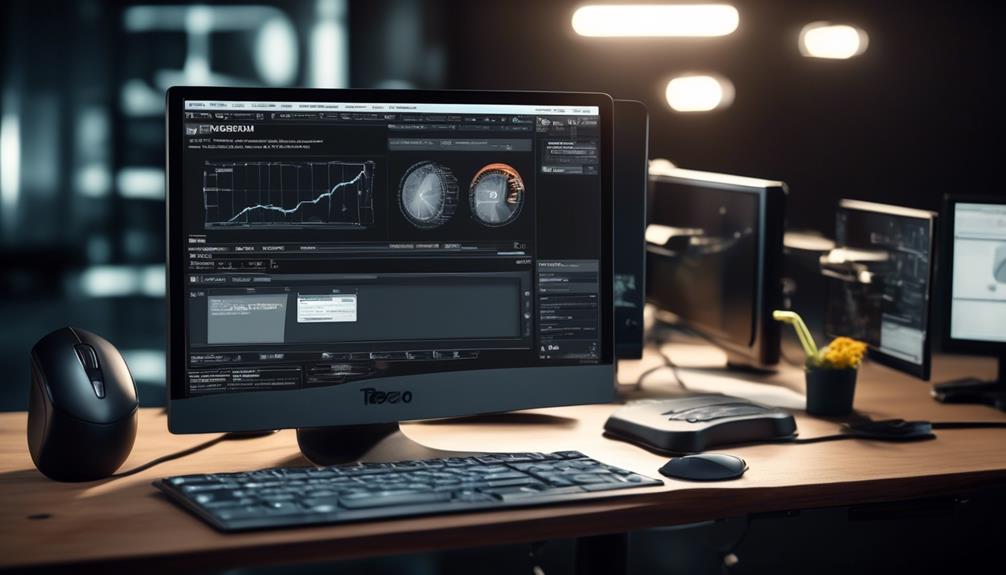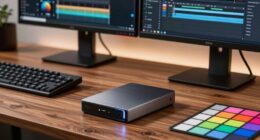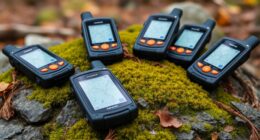Many people may be curious about how to update their Zoom firmware, a vital aspect of keeping performance and security in top shape. Updating firmware is a step that is frequently disregarded, yet it is crucial for guaranteeing that your Zoom device operates at its peak efficiency.
So, how can we ensure that our Zoom firmware is up to date and operating efficiently?
Key Takeaways
- Regularly updating the Zoom firmware improves performance, stability, and introduces new features.
- Verifying the current firmware version can be done through the device menu and checking the Zoom website for the latest version.
- To update the Zoom firmware, download the latest update from the website, transfer it to the SD card, and initiate the update on the recorder.
- Troubleshooting firmware update issues includes verifying compatibility, checking for file corruption, and seeking professional assistance if needed.
Why Update Your Zoom Firmware?
As Zoom users, it's crucial to regularly update the firmware of our devices to ensure optimal performance and security. Firmware updates offer several benefits that are essential to the smooth operation of our Zoom devices.
Firstly, updating firmware can significantly improve the performance and stability of the device by fixing bugs and enhancing its overall functionality. Additionally, these updates often introduce new features and capabilities, enhancing the user experience and expanding the device's capabilities.
Moreover, firmware updates address security vulnerabilities, providing protection against potential threats and ensuring the safety of our data during Zoom sessions. Ensuring compatibility with other hardware, software, and platforms is another crucial aspect of firmware updates, as it allows for seamless integration and usage across various environments.
Checking Your Current Firmware Version
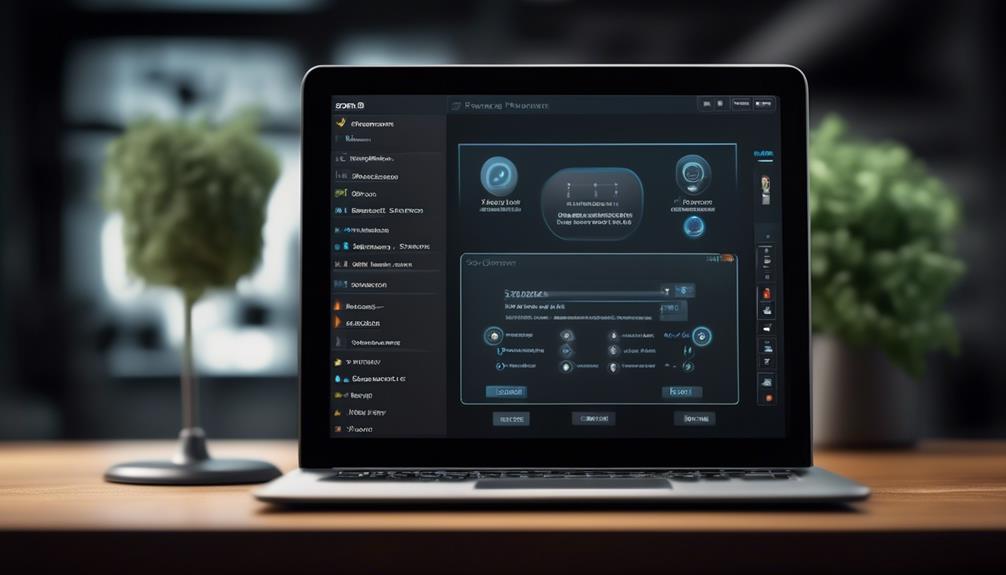
To ensure our Zoom devices are up to date and functioning optimally, it's important to begin by checking the current firmware version. Here's how to do it:
- Access the Zoom device menu: Navigate to the device's settings and look for the 'System' or 'Device Information' option to find the current firmware version.
- Firmware version display: The current firmware version will be displayed on the screen, showing the specific version installed on the device.
- Online firmware compatibility check: Visit the Zoom website and enter the device model and current firmware version to verify if it's the latest version available and if it's compatible with the device.
Checking the firmware version is a crucial step in the update process as it ensures that the device is ready for the latest enhancements and features. Additionally, verifying the firmware compatibility with the device model is essential to prevent any potential issues that may arise from installing an incompatible version.
Steps to Update Zoom Firmware
Beginning the update process involves ensuring that the Zoom recorder is powered on and checking the current firmware version displayed on the LCD screen. Once the current version is confirmed, visit the Zoom website to find and download the latest firmware update for your Handy recorder model.
After downloading the update, connect your computer to the Zoom recorder using a USB cable and transfer the firmware update .BIN file to the SD card's root directory. Safely eject the recorder from your computer and power it on while holding the PLAY/PAUSE button to initiate the update process. Select 'OK' or 'YES' to confirm the update and wait for the process to complete as indicated on the LCD display.
After updating, turn off the recorder and reboot to verify the new firmware version.
Firmware updates are crucial for addressing common firmware issues, enhancing device performance, and adding new features. By keeping the firmware up to date, users can ensure optimal functionality, improved stability, and compatibility with the latest accessories and software.
Regularly checking for updates and performing firmware updates can help to prevent and resolve potential issues, ensuring a seamless recording experience.
Troubleshooting Firmware Update Issues
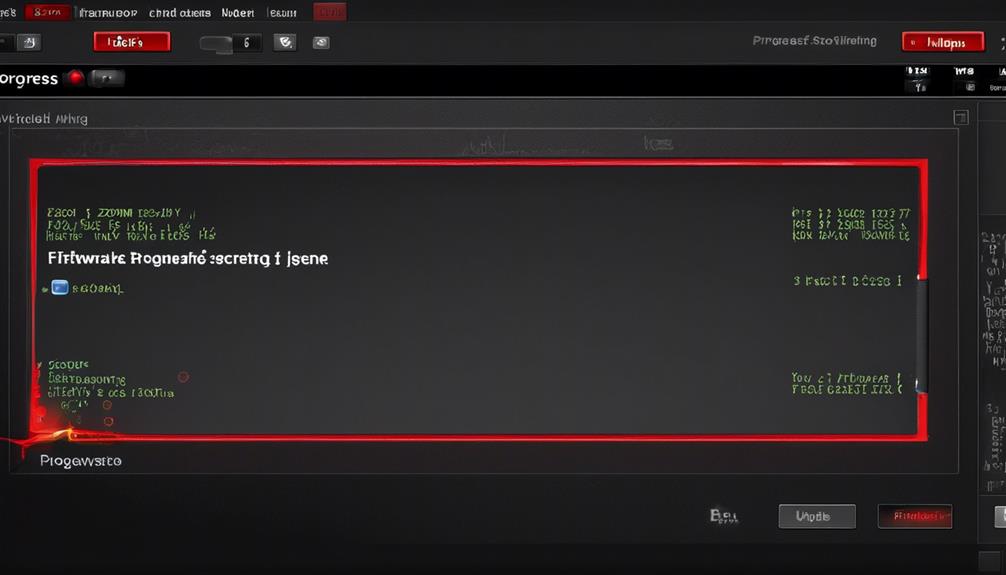
If encountering issues during the firmware update process, it's important to first ensure that the downloaded firmware update is compatible with the specific Handy recorder model being used. Here are some common firmware problems and troubleshooting tips to address them:
- Compatibility: Verify that the downloaded firmware is intended for your specific Zoom recorder model. Using an incompatible firmware can cause malfunctions or even damage the device.
- Corrupted Files: Ensure that the firmware update file isn't corrupted during the download process. Re-downloading the firmware update and verifying its integrity through checksums or by using a different internet connection can help resolve this issue.
- Insufficient Power: If the recorder powers off during the firmware update process, it can lead to a failed update and potential issues with the device. Make sure the recorder is fully charged or connected to a power source before initiating the firmware update.
Best Practices for Firmware Maintenance
After troubleshooting firmware update issues, it's essential to establish effective practices for maintaining the firmware of your Zoom recorder.
Regular firmware updates are crucial for ensuring that your Zoom recorder operates efficiently and securely. Firmware updates often include bug fixes, performance improvements, and new features, making it important to stay current.
One common challenge in firmware maintenance is the failure to regularly check for updates, leading to outdated firmware and potential issues. Additionally, some users may encounter difficulties in the update process, such as errors during the firmware installation or unsuccessful updates.
To address these challenges, it's recommended to set a schedule for checking and installing firmware updates, ensuring that the recorder stays up to date. It's also important to carefully follow the manufacturer's instructions when updating the firmware to minimize the risk of encountering installation issues.
Frequently Asked Questions
How Do I Upgrade My Zoom to the Latest Version?
We can upgrade your Zoom to the latest version by following the updating process.
First, open the Zoom desktop application and sign in.
Then, click on your profile picture and select 'Check for Updates.'
If there's a new version available, click 'Update' to start the process.
If you encounter any issues during the updating process, try troubleshooting steps such as restarting the application or your device, and ensuring a stable internet connection.
How Do I Force Zoom to Update?
To force Zoom to update, ensure the recorder is connected to the computer and the latest firmware is downloaded. If automatic updates fail, use the manual update process.
Access the recorder's menu, check the current firmware version, and visit the Zoom website to download the latest firmware.
Copy the .BIN file to the SD card's root directory, eject the recorder, and power it on while holding the PLAY/PAUSE button to initiate the update.
Why Can't I Update My Zoom?
Troubleshooting connection issues with Zoom firmware updates can be frustrating. We've encountered similar problems before.
It's essential to ensure a stable and reliable internet connection during the update process. Additionally, double-check that the downloaded firmware file is compatible with your specific recorder model.
If issues persist, reaching out to Zoom's technical support team for further assistance may be necessary.
How Do I Update Zoom on My Mac?
Updating Zoom on Mac is simple and efficient. Just visit the Zoom website and download the latest firmware for your Handy recorder model.
Connect your recorder to the Mac using a USB cable and copy the firmware update .BIN file to the SD card's root directory.
Then, follow the on-screen prompts to start and complete the update process.
It's a seamless process and ensures that your recorder is always up to date.
Conclusion
So, there you have it! Updating your Zoom firmware is like giving your recorder a brand new pair of shoes. It keeps everything running smoothly and ensures you're getting the best performance out of your device.
Just follow our simple steps and you'll be on your way to a recorder that's as good as new!

